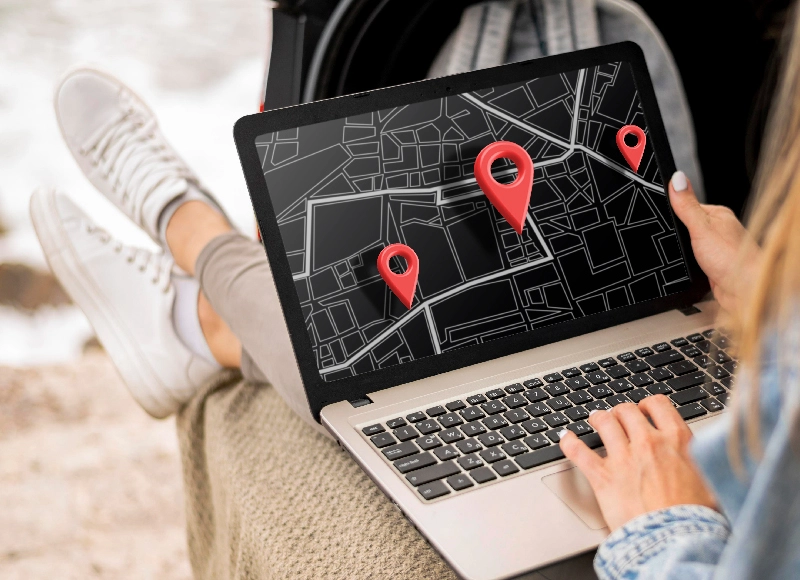- Home
- Blogs
What is Geofencing Marketing: A Guide for Beginners
Get started with geofencing marketing using our beginner's guide. Learn how to reach your target audience with precision and increase engagement.

In digital transformation, when companies need to be at the top of everything, especially in marketing innovation, geofencing is becoming a powerful tool. Geofencing marketing allows companies to target potential consumers depending on their location, resulting in highly focused and specific campaigns. This complete beginner's guide will dig into geofencing marketing, discussing its benefits, techniques, and best practices.
Understanding Geofencing Marketing
So, what is geofencing marketing? GPS or RFID technology involves creating virtual boundaries or "geofences" around physical locations. These geofences can be as small as a single store or as large as an entire city. Customers who enter or exit the designated area trigger a pre-determined action on their mobile devices. This action could range from receiving push notifications to receiving targeted advertisements.
Benefits of Geofencing Marketing
Hyper-Targeting
Targeting customers within specific geographic areas, businesses can tailor their marketing messages to appeal directly to people most likely interested in their products or services.
Greater Engagement
Geofencing marketing allows businesses to engage with customers in real time when they are nearby or in a competitor's store. This significantly increases the likelihood of conversions by capturing immediate attention.
Personalization
Businesses can create highly personalized experiences for their customers by leveraging data gathered through geofencing technology. Customers feel valued when messages and offers are tailored specifically for them based on their location and preferences.
Increased Foot Traffic
Geofencing allows brick-and-mortar stores to drive foot traffic by enticing potential customers nearby with irresistible offers and promotions they can avail of immediately.
Geofencing Marketing Strategies
Location-Based Offers
One popular strategy is offering exclusive discounts when customers enter designated geofenced areas. This incentivizes potential buyers to make an impulse purchase while capitalizing on the allure of immediacy.
Competitor Conquesting
Geofencing marketing can target customers within a competitor's geofenced area. By offering compelling deals and promotions, businesses attempt to poach customers already considering a purchase.
Event Targeting
Another effective strategy is to geofence specific events or conferences related to the business's industry. Companies can build brand recognition and boost conversions by providing valuable information or personalized offers about products and services during these events.
Best Practices for Geofencing Marketing
Clear Communication
When using geofencing technology, it is crucial to seek the user's permission and inform them about the data that will be collected. Transparent communication builds trust and ensures compliance with privacy regulations.
Timing Matters
Timing plays a crucial role in geofencing marketing success. Businesses must send notifications or advertisements when customers are most likely not busy and receptive.
Relevant Content
Geofence-triggered messages should provide value to the customer, whether it is informing them of an ongoing sale, exclusive event invitations, or relevant product recommendations based on past purchases.
Optimize for Mobile
Ensure that all content and experiences delivered through geofencing are mobile-friendly and seamlessly integrated with apps or mobile web platforms commonly used by your target audience.
Experiment and Analyze
Like any marketing endeavour, it is important to experiment with different strategies and measure their effectiveness through analytics tools. Regular monitoring allows businesses to optimize their campaigns over time for better results.
Best Practices for Geofence Design
The effectiveness of a geofencing campaign greatly depends on how well the geofences are designed. Here are some best practices for designing effective geofences:
Accuracy
Use accurate GPS coordinates or street addresses when setting up geofences to ensure they precisely enclose the intended physical area.
Size and Shape
Consider the size and shape of your target location when creating a geofence. It should be large enough to capture relevant foot traffic but not too broad, as it might include areas outside your target audience.
Test Multiple Triggers
To maximize the chances of triggering actions from users, test multiple triggers beyond just entering or exiting a geofenced area. For example, you could set up triggers based on time spent within a specific zone or visiting certain points of interest nearby.
Common Mistakes To Avoid For Geofence Design
Frequency Tapping
Consider capping the number of times a potential customer will be exposed to an ad. Excessive exposure can cause banner blindness, lowering the impact of your ad campaigns.
Incorrect Ad Placements
Consider the types of businesses where you would want your ad placements to be seen. Customizing your geofencing ads will ensure that they can reach the intended audience.
Inaccurate Data Tracking
Data can quickly change as people physically and online move in and out of the geofence. It makes location data sources in geofencing essential to ensure your ads can influence purchase decisions and establish brand recognition.
Inadequate Tracking
With new data coming in frequently, it is best to place targeted ads for people in the geofenced area within the past 30 to 60 days. Targeting beyond that might add to the budget without getting any fruitful results.
No Exclusion Lists
Exclusion lists enable businesses to target their intended audience without wasting money. It can be by showing ads only to interested segments of people.
Not Personalizing Enough
Showing the same group of ads to every audience entering the geofence can result in high spending and unsatisfying results. Personalizing your ads to user's preferences and journeys can significantly increase the chances of conversions.
Coverage
Excessive or limited coverage can make finding and targeting your potential customers challenging. Careful geofencing parameters consideration will make it easier to identify the extent of coverage your ad campaigns will need.
Singular Goal
Opting to run more than one type of geofencing ad will significantly narrow down your ability to reach and convert your potential customers. Consider running multiple and simultaneous ad campaigns to capture more attention and, eventually, conversions for a wide range of services or products.
Geofencing vs. Geotargeting
Often used interchangeably, geofencing and geotargeting are two different aspects of running ad campaigns for an area. Geotargeting focuses on targeting a specific group of users near a geolocation area. On the other hand, geofencing involves creating a virtual boundary that, when crossed, triggers ad groups of a particular type. These ad groups are then displayed to potential customers as they move in or out of the fenced area.
As geotargeting focuses on the area and not the movement of traffic in the fenced area, it can mainly target customers at the bottom of the funnel. Additionally, geofencing is backed by programmatic capabilities, making it possible to target prospects, retargeting, and allowing marketers to customize and target at all points in the sales journey.
What Is Geofencing Used For?
Geofencing ads can deliver a personalized solution to an immediate problem or around their current circumstances. It allows businesses to deliver a customized interaction when it is most convenient and needed without overwhelming potential customers.
Providing discounts and offers to your audience's real-time needs based on their physical location in the fenced area can deliver a valuable experience and significantly increase the chances of making sales.
Industries That Are Using Geofencing
Retail
With geofencing, retailers can gain insights into their potential customer's behaviour and the places they prefer frequently visiting for shopping purposes. It helps retail businesses run target ads more accurately while creating room to upgrade their existing marketing strategies to understand and provide for evolving consumer needs.
Hospital
Geofencing ads allow hospitals to run special campaigns focusing on a cause or a requirement. For instance, hospitals can run geofencing ads to fill a position in their hospital. The ad will be shown to people with the required qualifications.
Transportation Services
Apps like Uber have location access to your device, allowing them to send you a push notification whenever you are in their pre-described geofenced areas.
Hospitality
The industry benefits by identifying potential customer requirements and using location-specific triggers (notifications and SMS) to provide location-based services. Additionally, the industry relies on customer data as it helps refine the customer experience it provides.
Key Geofencing Success Metrics To Track
Ad Views
Tracking this metric can reveal the reach and visibility of the geofencing marketing campaigns. Additionally, the metric shows how often the target audience sees your ad sets in the geofenced area.
Cost Per 1,000 Impressions
It is a measure of the cost incurred for every 1000 ad impressions. This metric helps in gauging the cost-effectiveness of the geofencing campaign.
Click-Through Rate
This metric indicates the number of clicks your ad got once it was clicked. It is considered an engagement and interest-generated indicator in many cases.
Conversion Zone Visits
Indicates the number of times your physical/online store was visited when the target customer came across your ads. Notably, it indicates the real-world impact of the geofencing ad campaigns.
Conclusion
Geofencing marketing holds immense potential for businesses looking to enhance digital advertising by delivering personalized experiences tailored toward location-specific customers at pivotal moments. Brands can benefit from hyper-targeting potential customers within proximity, increasing engagement rates, fostering customer loyalty, and driving foot traffic - ultimately leading to increased conversions.

